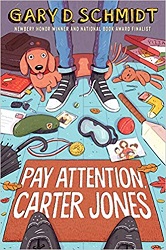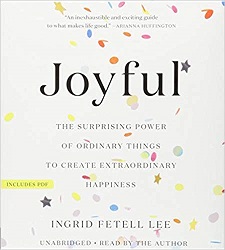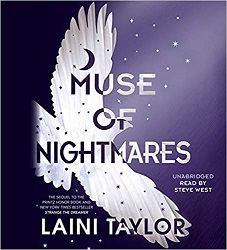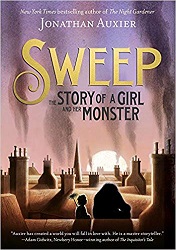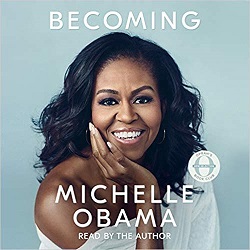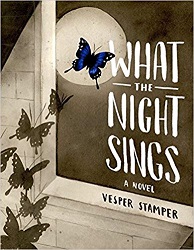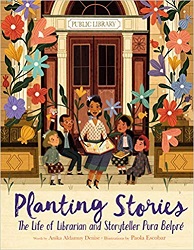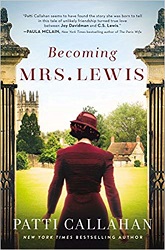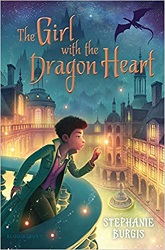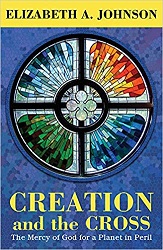 Creation and the Cross
Creation and the Cross
The Mercy of God for a Planet in Peril
by Elizabeth A. Johnson
Orbis Books, 2018. 238 pages.
Starred Review
Review written March 18, 2019, from my own copy, purchased via amazon.com
I’ve been reading several books on theology lately. I think I heard of this book on a twitter thread after following some other authors I liked. I’m especially interested in the theology of the cross. I don’t like the Satisfaction Theory, and am reading about alternatives.
This book has a focus on a theology that cares about the entire created world. However, along the way, she writes a lovely explanation of why Anselm’s satisfaction theory made sense in feudal times, but doesn’t really match with what the Bible teaches and doesn’t make as much sense with our mindset today.
In the Introduction, the author gives us the questions that drive this book:
Many theologians have written of human redemption. But how in our day can we understand cosmic redemption? At a time of advancing ecological devastation, what would it mean to rediscover this biblical sense of the natural world groaning, hoping, waiting for liberation? What would it mean for the churches’ understanding, practice, and prayer to open the core Christian belief in salvation to include all created beings?
Now, I attended Biola University, and I know I learned about Anselm, who proposed the Satisfaction Theory for understanding the cross. But I hadn’t thought about what Elizabeth Johnson points out — that this theory wasn’t proposed until a thousand years after the death and resurrection of Jesus.
The author takes on Anselm’s theory head on. She’s looking for a theory that embraces creation, and his theory “simply swept away concerns about creation’s groaning.” Her entire first section is called “Wrestling with Anselm,” and she adapts the format of his writings to use in this book – writing the chapters as a series of conversations with a student, just as Anselm did.
My fundamental reason for reading this book was dissatisfaction with Anselm’s theory (even though I was only vaguely aware that it came from him), so I especially liked that part of the book.
She puts Anselm’s theory in his own cultural context:
By the eleventh century European society had shifted from the law of the Roman empire, wherever it had extended, to a feudal system of justice. In the absence of the central authority of national states, the authority of a local ruler grounded and safeguarded the order of a whole region. His word was law. Violations of the law were more than simply disobedience to a rule; they were an offense against the dignity and honor of the feudal overlord. The crucial point is that these insults had an impact on society. Disobedience to the lord’s word created disorder in the social fabric, or as we might say today, disruptions to the common good. To restore order, the law-breaker either had to be punished or had to pay compensation to rectify the situation. In Anglo-Saxon regions a graduated system of fines was actually devised whereby the offender paid due recompense for his or her criminal offense. This payback, called satisfaction, restored the honor of the lord, which in turn returned society to a peaceful, orderly operation.
The pattern ran through all levels of society. The amount of satisfaction required corresponded to the social status of the offended party, so that if one insulted a milkmaid less was due than if one somehow offended the lady of the manor. But in either case the requirement to restore the social order by means of some payment was non-negotiable. By Anselm’s time the practice of satisfaction had become an integral part of the powerful feudal structure.
The author quotes Anselm, showing how he brought these ideas into his theology.
But that’s not how Jesus presented his Father! I love this paragraph:
All four gospels depict how in his teaching and practice Jesus revealed a different, non-feudal picture of the way God deals with sin. Think of the parables of the shepherd going after his lost sheep and the woman searching for her lost coin, both rejoicing with their neighbors when they find the one who has strayed, no satisfaction needed. Remember the parable of the forgiving father who runs out to embrace the returning prodigal son, throwing a party to welcome him back, no payback required. Recall the paralytic who, after Jesus assured him that his sins were forgiven, took up his pallet and walked away, no atonement given. Call up the story of the Pharisee and the publican in the temple; when the publican prays, “God, be merciful to me, a sinner,” he goes home justified, nothing more required. Keep in mind Luke’s depiction of Jesus himself, forgiving his executioners as his life ebbed away, no satisfaction needed.
Elizabeth Johnson points out additional problems with the Satisfaction Theory. First and probably most important, it makes God morally repulsive.
Anyone who understands love intuits the mistake preachers make when they say God, when offended, needs to be appeased by someone’s death. This goes against the best instincts of the human experience of love, and sets an appalling example.
A second problem is that it focuses entirely on the death of Jesus, as if his resurrection weren’t important.
In the presence of Jesus, the Crucified One who is now the Living One, his disciples proclaimed the good news that evil does not have the last word. Hope is born for a future for all others who have come to grief, for all the defeated and the dead, even as crosses keep on being set up in history. Talk about salvation!
Besides that, it also leaves out the life and ministry of Jesus.
Jesus’ preaching of the coming reign of God, by turns joyful and challenging, refreshed people’s social situations as well as their relationship to God. His healings, exorcisms, inclusive table fellowship, and partisanship for marginalized people, interpreted by his preaching, already offered an anticipation of the world in which God will reign, a world without tears. Violent death was the price Jesus paid for this prophetic ministry, to which he was faithful with a tenacity that would not quit. Historically it was neither foreordained nor accidental but was carried out by the power of empire to which his movement posed a threat. He suffered for the way he loved God and neighbor, not because he needed to pay a debt to divine honor.
She explains a significant fourth problem is that Anselm’s theory sacralizes violence.
By turning the historically unjust execution of Jesus into some kind of necessary good, the theory has offered a subtle but real religious justification for the evil of violence. Given the way divine honor is recompensed, it sets up violence as divinely sanctioned. Politically this translates into a blessing on the use of force, specifically the use of aggressive force by powerful people. The thinking runs this way: God used violence for a good purpose, so why shouldn’t we? Such reasoning turns a manifest evil, the torture and execution of an innocent person, into a “good” that continues to harm other people. In a word, the atonement paradigm sanctifies violence.
I hadn’t ever noticed before that this view glorifies suffering.
I have heard homilies where the suffering of Jesus gets connected with obedience. For example, he had to go to Jerusalem to fulfill his Father’s will that he should suffer and die. We are supposed to imitate him in his obedience. You already covered the problem of the disastrous image of a God who wills suffering to compensate for offended divine honor. But this makes it worse. I have to say that obedience to a male authority figure is not a big value in my life, let alone obedience to a male authority that wills my suffering. As a spiritual path, this is downright toxic.
Here’s another point close to that one:
A sixth criticism is the introduction of an ethic of submission in the face of injustice. Take away the resurrection and the public ministry of Jesus, bring forth suffering, perversely, as a good in itself, and the cumulative effect is to allow actual injustice on the earth to continue without challenge. Edward Schillebeeckx offers a sharp insight about how this happened. When theology pondered the cross as a free-standing event, suffering became a way of avenging God’s honor to our benefit, instead of the price Jesus paid for fidelity to his ministry. It appeared that God was pleased with the evil of killing an innocent person. God’s act of overturning the judgment of the authorities by raising Jesus from the dead disappeared from view. In these ways the satisfaction theory “tamed” the critical force of the crucifixion, making it into a tool that integrates wrongful suffering into the way things necessarily are. While this may not be the exact significance that Anselm gave to his theory, it is the way it was preached and written about in many spiritual books. People were encouraged to suffer and endure injustice without resistance rather than challenge existing wrongful circumstances. Both Catholic and Reformation traditions have walked down this path.
The author points out how this was used to teach slaves to submit to slavery and still has impact today:
Feminist theologians have criticized the debilitating psychological effects fostered particularly on women by the satisfaction theory’s interpretation of the cross. In a strange way the innocent Christ who suffered willingly on behalf of others has traditionally been held up as a model for women in a way different from men. It is women who are supposed to serve silently, obediently, without question, in imitation of the Crucified One. Such glorification of passivity undermines the agency that rightly belongs to women as adult human beings, all the while giving traditional expectations of women and their gendered roles in church and society a powerful divine gloss.
This kind of theology can prove intensely dangerous when domestic situations turn abusive, since holding up passive submission to victimization as a virtue undermines women’s rightful ability to protect themselves from violent, battering partners. In this vein women have also critiqued the satisfaction theory for the kind of parent-child relationship it seems to portray. A psychological pattern of needing to placate an angry parent, of buying love and forgiveness through sacrifice, is debilitating to healthy child development. Furthermore, the notion of a father who needs the death of a son is abhorrent, no matter what benefit might accrue to others. Salvation is no excuse for child abuse on a cosmic scale.
And the final criticism she lists fits well with her theme.
A seventh criticism highly relevant today is the ecological silence maintained by Anselm. Given its focus on human sin and the need to restore divine honor, the satisfaction theory obviously neglects God’s salvific presence in the rest of creation. It assumes a view of the natural world as merely a stage on which the important drama of human salvation is played out. Thus it fails to build up faith convictions that lead to ecological commitments.
By contrast, as we will see, biblical themes of the community of creation, God’s covenant with all creatures of flesh on the earth, incarnation, resurrection, and hope for a renewed heaven and earth where justice dwells open up a tremendous vision of salvation not only for humans but for all creatures who are other-than-human and the ecological niches in which they dwell and interact.
So, having looked closely at Anselm’s theory, she is then able to move to the true focus of the book:
For Christian theology, the specific focus of seeking understanding about this matter gravitates toward Jesus Christ. We come then to the question on which this whole work rests, a question that is as rife with assumptions as is Anselm’s and every other theology of salvation. The question is this: How can the life, death, and resurrection of Jesus Christ be understood as good news for the whole created world, including human beings, to the praise of God and to practical and critical effect?
Now, I’ll admit – my focus in reading the book was not the same as the author’s focus in writing the book. But I exquisitely loved what she showed about the God of the Old Testament in developing her theology – He is a God of overwhelming, abundant, forgiving love. Yes! This matches what I read in the Old Testament.
Now I’ll start quoting some passages I marked:
The God of Israel is not a generic God but one whose character bends toward those who suffer injustice, with intent to save. Israel knows its God by this name, a name attached to freedom: “I am YHWH your God who brought you up out of the land of Egypt” (Ps 81:10). . . .
Divine identification with the plight of the dispossessed in the event of the exodus makes understandable the constant return throughout the Bible to themes of God’s special concern for poor, powerless, oppressed, and marginalized persons. Gracious and merciful, God acts to make a new future possible. Such compassionate concern also undergirds the great biblical ethic of hospitality: “You shall not wrong or oppress a resident alien, for you were aliens in the land of Egypt” (Ex 22:21); and more positively, “You shall love the stranger, for you were strangers in the land of Egypt” (Deut 10:19). The people liberated from slavery must act in like manner as the Holy One who delivered them. . . .
It flowers in psalms of praise: “YHWH is gracious and merciful, slow to anger and abounding in steadfast love. YHWH is good to all, and compassionate toward all he has made” (Ps 145:8). It appears also in psalms where a person in trouble cries out to God for rescue: the insolent rise up against me and a band of ruffians seeks my life, “But you, O YHWH are a God merciful and gracious, slow to anger and abounding in steadfast love and faithfulness” (Ps 86:15). Based on the revelation flowing from the event of the exodus, these adjectives bear witness to YHWH’s bedrock, reliable goodness and commitment that are everywhere assumed.
But what about the wrath of God?
The real issue, though, is how to understand divine anger in the context of overwhelming graciousness and mercy. The danger is that within a patriarchal, punitive setting, speaking of a wrathful God has been used to justify holy wars and torture, hostility to outsiders, and debilitating guilt in sensitive consciences. But righteous anger is a different breed of cat. It is profoundly ethical. It waxes hot in moral outrage because something good is being violated. Arising from love, it awakens energy to act to change the situation. . . .
In the context of God’s graciousness and mercy, divine anger functions for justice. It bespeaks a mode of caring response in the face of what harms beloved human beings or the created world itself. “The exploitation of the poor is to us a misdemeanor; to God it is a disaster,” writes Abraham Heschel. Divine wrath is a worthy response. True, it lasts but a moment; true, it is instrumental, aimed at change and conversion. But it stands as an antidote to sentimentality.
And she looks at the strong theme of redemption – in the Old Testament.
The idea of a God who redeems Israel and who therefore can be called the Redeemer became firmly fixed in Israel’s religious imagination well before the disastrous exile in Babylon. In the dynamic way that language works, the technical meaning of redeem broadened out over time to include connotations of God’s helping, rescuing, liberating, restoring, forgiving, showing steadfast love, comforting, taking away fear, and especially caring for the poor and defenseless. The language of redeeming also became associated with the act of saving. While in the same general family of meaning, the latter carries a distinct sense of healing from sickness and restoring to health, the opposite of which is perishing.
I love the part where she looks at many, many instances of the God of Israel proclaimed to be Redeemer in Second Isaiah. Yes! Anyone who reads Isaiah will pick up on this theme of comfort.
There is a crucial point to be gleaned for the theology of accompaniment we are working to establish as an alternative to the satisfaction theory. Let me state it as plainly as possible. More than five hundred years before Jesus’ death on the cross, Second Isaiah proclaimed that the God who created heaven and earth was redeeming and saving Israel and forgiving their sin out of the infinite depths of divine compassion. This God is forever faithful and does not need anyone to die in order to be merciful. It is strange to contemplate how Christian preaching in the tradition of the satisfaction theory seems to assume that some seismic shift suddenly changed the divine character, so that Jesus’ death was necessary to win favor for sinners. One hears that he came to die, and without the cross we would not be saved, as if at some point the flow of divine mercy were shut down, needing Jesus’ death to start it up again. As we will discover, however, rather than making a necessary gift to placate divine honor, Jesus’ brutal death enacts the solidarity of the gracious and merciful God with all who die and especially with victims of injustice, opening hope for resurrection amid the horror. If ever a healing balm could reach the depth of Christian soul wounded by the satisfaction theory, a close reading of Second Isaiah might begin the treatment.
She also looks at many Psalms, full of forgiveness.
At the cost of repeating myself, I want to note that in all these psalms there is no need for anyone to die. When a person turns to God from a wrongful path, divine forgiveness of sin is a gift generously given, pressed down and overflowing, because of the goodness of the God who loves them: “as far as the east is from the west, so far God removes our transgressions from us” (Ps 103:12). No satisfaction is needed.
And Jesus didn’t preach a different God!
The early church’s expanding Christological interpretations of Jesus led the community to view the God of Israel in light of its own relationship to Christ, which in turn led to new insights and formulations about God in Trinitarian terms. Nevertheless, the First Testament’s view of the God who creates and saves shaped the early church’s interpretation of Jesus in an intrinsic and irreplaceable way. The God whom Jesus revealed and even embodied as self-expressing Word is none other than the God of Israel. “In times past God spoke to our ancestors in many and various ways by the prophets, but in these last days he has spoken to us by a Son. . .” (Heb 1:1). It is the same God who speaks, abounding in steadfast love and faithfulness.
Since Elizabeth Johnson is not ignoring Jesus’ life, ministry, and resurrection, there’s more about those and how they connect with creation.
It is enormously helpful to see the way early Christians connected resurrection with creation. The logic of the connection allows this impossible hope to make more sense. Paul forges this link in a quick line: God “gives life to the dead and brings into existence the things that do not exist” (Rom 4:17). There it is. Just like that, you can see that if the living God can create the world to begin with, then God can create anew in death. Why ever not? No future existed before the world began; no future exists for a dead person. But divine creative action that occurs “in the beginning” continues to act through time and up to the end, which becomes a new beginning. It is the same loving, creative, divine action.
The author calls her view a “theology of accompaniment.” I love that! She’s talking much about accompaniment with all creation – but it also applies as God with us, each individual.
What our trek through the scriptures gives us instead, to use alternative language, is a theology of accompaniment. It fosters the idea of salvation as the divine gift of “I am with you,” even in the throes of suffering and death. Redemption comes to mean the presence of God walking with the world through its traumas and travail, even unto death. This theology entails a double solidarity, of the actual Jesus who lived with all who live, suffer and die, and of the resurrecting God of life with the ministering and crucified Jesus.
Expanding further on that idea:
The double solidarity of Jesus with those who suffer and of God with Jesus structures a theology of accompaniment so that it brings the presence of God who saves to the fore. Keep in mind that we are talking here about the same God who creates and delights in the world; the same God who sides with slaves against the might of Pharaoh, with exiles against their imperial captors, and now with a crucified prophet against the Roman empire; “a God merciful and gracious, slow to anger, and abounding in steadfast love and faithfulness, keeping steadfast love for the thousandth generation, forgiving iniquity and transgression and sin” (Ex 34:6-7). We are talking about the same gracious God, “your Savior and your Redeemer” (Isa 49:26), whom Jesus called father, whose compassion flashed out from the picturesque parables Jesus made up, and was tasted in the challenge and joy of his multiple interactions. Toward the end of the New Testament we read the bold statement that “God is love” (1 Jn 4:8). This is a pithy summary of all that has gone down in the history of revelation up to that point. God loves the world and, like any good lover, wants the beloved to flourish.
In talking more about this theology of accompaniment Elizabeth Johnson, like other authors I’ve read, points out that the New Testament writers used an abundance of metaphors.
Virtually every commentator points out that the New Testament has no logically articulated theory of salvation. No one composed a systematic explanation of how the life, death, and resurrection of Jesus, let alone the cross taken by itself, redeemed the world. There is no single doctrine. There is no Anselm in the first century. There are no theories, syllogisms, or tightly reasoned arguments. New Testament texts were not written in objectively academic language.
While the disciples did not theorize, what they did do was find metaphors in holy scripture as well as everyday life that illuminated their religious experience of the good news and helped them communicate it to others. Their writing is like poetry, a brief phrase here, a more extended reflection there, a flash of discovery here, a whisper of insight there. All the vivid metaphors hold that the saving God had acted through what happened to Jesus, but none try to rationalize precisely how this works. When pushed to their logical limits, the illuminating metaphors inevitably break down.
This is a good word of caution when we try to make one metaphor the final word on what Jesus’ death was all about.
The author does go on to look at many of the metaphors used. And she draws beauty and insights out of those metaphors and shows us how they apply to all creation, not humans alone. I love this joyous summary after looking at many types of metaphors:
Talk about creativity! The disciples drew ideas from the scriptures, especially Genesis, Exodus, the psalms, and the prophets. They made analogies from temple worship and the annual cycle of Jewish feasts. And they crafted new metaphors from everyday spheres of life.
Many of these metaphors speak dynamically of an experience of a changed relationship to God thanks to Jesus Christ. They describe the grace of going from sick to healthy, from enemy to friend, from estranged to reconciled, from bound to free, from indicted to not guilty, from slave to beloved child, from lost to found, from poor to rich, from oppressed to liberated, from alien to citizen, from old creation to new creation, from death to life. The metaphor of blood from animal sacrifice bespoke purification, forgiveness, rededication. Isaiah’s servant was reconfigured to the cross with the intuition that one person’s suffering can heal others of their infirmities.
The penultimate section of the book develops the theology of accompaniment by looking at the promises made to all creation, celebrating God as the God of all flesh. She calls it “deep incarnation.”
So if we take flesh at its most inclusive meaning, the flesh assumed in Jesus Christ connects the living God with all human beings; this has been said for centuries. But it also connects the creating God who saves with all biological life and the whole matrix of the material universe down to its very roots; this is the new vision.
In the final section, she talks about how this theology can change our view of the world and its creatures.
To sum up, the living God, gracious and merciful, always was, is, and will be accompanying the world with saving grace, including humans in their sinfulness, and humans and all creatures in their unique beauty, evolutionary struggle, and inevitable dying. The cross does not change this truth, or occasion a shift in God’s attitude from betrayed honor to willingness to forgive. It does make the compassionate love of God’s heart blazingly clear in an historical event. “The death of Christ becomes an icon of God’s redemptive co-suffering with all sentient life as well as the victims of social competition,” to recall Gregersen’s insight. In Jesus Christ crucified we are gifted with an historical sacrament of encounter with the mercy of God, which impels us toward conversion to the suffering earth, sustained by hope for the resurrection of the flesh of all of us.
As always when I quote so much from a book, I’m running the risk of giving you the impression I’ve covered everything she has to say and am presenting her complete arguments. This is only a taste – but enough of a taste to remind me what I read. In fact, I wrote such a long summary in hopes of retaining more of her points in my own mind.
But as always, I hope that those who find these selections inspiring or challenging or thought-provoking will read the book themselves. Highly recommended.
orbisbooks.com
Buy from Amazon.com
Find this review on Sonderbooks at: www.sonderbooks.com/Nonfiction/creation_and_the_cross.html
Disclosure: I am an Amazon Affiliate, and will earn a small percentage if you order a book on Amazon after clicking through from my site.
Disclaimer: I am a professional librarian, but I maintain my website and blogs on my own time. The views expressed are solely my own, and in no way represent the official views of my employer or of any committee or group of which I am part.
What did you think of this book?
